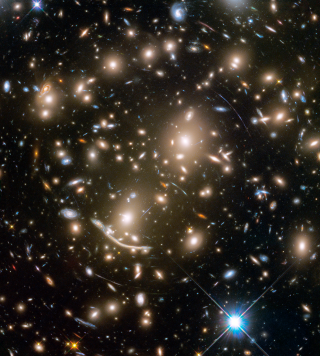Bibcode
Cuomo, Virginia; Hee Lee, Yun; Buttitta, Chiara; Aguerri, J. Alfonso L.; Maria Corsini, Enrico; Morelli, Lorenzo
Bibliographical reference
Astronomy and Astrophysics
Advertised on:
5
2021
Journal
Citations
24
Refereed citations
23
Description
Context. More than 10% of barred galaxies with a direct measurement of the bar pattern speed host an ultrafast bar. These bars extend well beyond the corotation radius and challenge our understanding of the orbital structure of barred galaxies. Most of the bars are found in spiral galaxies, rather than in lenticular galaxies.
Aims: We analyse the properties of the ultrafast bars detected in the Calar Alto Legacy Integral Field Spectroscopy Area Survey to investigate whether they are an artefact resulting from an overestimation of the bar radius and/or an underestimation of the corotation radius or a new class of bars, whose orbital structure has not been understood yet.
Methods: We revised the available measurements of the bar radius based on ellipse fitting and Fourier analysis and of the bar pattern speed from the Tremaine-Weinberg method. In addition, we measured the bar radius from the analysis of the maps tracing the transverse-to-radial force ratio, which we obtained from the deprojected i-band images of the galaxies retrieved from the Sloan Digital Sky Survey.
Results: We found that nearly all the sample galaxies are spirals with an inner ring or pseudo-ring circling the bar and/or with strong spiral arms, which hamper the measurement of the bar radius from the ellipse fitting and Fourier analysis. According to these methods, the bar ends overlap with the ring or the spiral arms, thereby making the adopted bar radius unreliable. On the contrary, the bar radius from the ratio maps are shorter than the corotation radius. This agrees with the theoretical predictions and findings of numerical simulations regarding the extension and stability of the stellar orbits supporting the bars.
Conclusions: We conclude that ultrafast bars are no longer observed when the correct measurement of the bar radius is adopted. Deriving the bar radius in galaxies with rings and strong spiral arms is not straightforward and a solid measurement method based on both photometric and kinematic data is still missing.
Aims: We analyse the properties of the ultrafast bars detected in the Calar Alto Legacy Integral Field Spectroscopy Area Survey to investigate whether they are an artefact resulting from an overestimation of the bar radius and/or an underestimation of the corotation radius or a new class of bars, whose orbital structure has not been understood yet.
Methods: We revised the available measurements of the bar radius based on ellipse fitting and Fourier analysis and of the bar pattern speed from the Tremaine-Weinberg method. In addition, we measured the bar radius from the analysis of the maps tracing the transverse-to-radial force ratio, which we obtained from the deprojected i-band images of the galaxies retrieved from the Sloan Digital Sky Survey.
Results: We found that nearly all the sample galaxies are spirals with an inner ring or pseudo-ring circling the bar and/or with strong spiral arms, which hamper the measurement of the bar radius from the ellipse fitting and Fourier analysis. According to these methods, the bar ends overlap with the ring or the spiral arms, thereby making the adopted bar radius unreliable. On the contrary, the bar radius from the ratio maps are shorter than the corotation radius. This agrees with the theoretical predictions and findings of numerical simulations regarding the extension and stability of the stellar orbits supporting the bars.
Conclusions: We conclude that ultrafast bars are no longer observed when the correct measurement of the bar radius is adopted. Deriving the bar radius in galaxies with rings and strong spiral arms is not straightforward and a solid measurement method based on both photometric and kinematic data is still missing.
Related projects

Galaxy Evolution in Clusters of Galaxies
Galaxies in the universe can be located in different environments, some of them are isolated or in low density regions and they are usually called field galaxies. The others can be located in galaxy associations, going from loose groups to clusters or even superclusters of galaxies. One of the foremost challenges of the modern Astrophysics is to
Jairo
Méndez Abreu